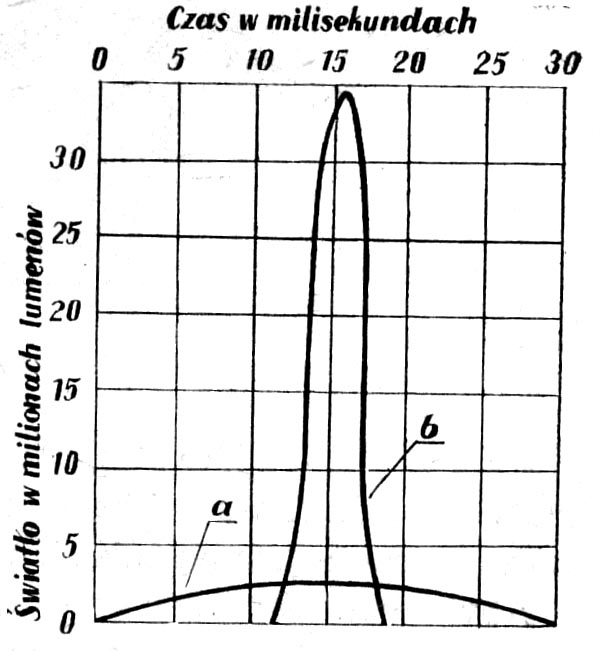SYNCHRONIZATION DEVICES FOR FLASHES.
All 35mm SLRs had a built-in flash sync device, combustion and electron.
These devices rely on it, that the flash attached to the camera fires simultaneously with the shutter release.
Synchronization with combustion lamps is relatively uncomplicated, because the flash of such a lamp lasts approx. 1/50 s, so it is relatively easy to "fit" in it the opening period of the central shutter. With a focal plane shutter, the period of its slit in front of the entire plane of the membrane is usually approx 1/60 s, even with short exposure times.
However, synchronization with the electron flash is more difficult, whose flash lasts from 1/500 s — 1/10 000 s. It's the other way around here, this short flash "fits" in any central shutter speed, but not in aperture shutter speeds, where the film is irradiated in "strips". Only these shutter speeds can be synchronized, at which the shutter slit moving in front of the film is equal to its area, so at a speed of approx. 1/30 s — 1/125 s.
Synchronization devices built into the body of the camera and the shutter allow you to connect the lamp to it with a single contact marked with the letter "X", which then supports both types of lamps or via two contacts: ,,X” i ,,M”. The first contact is for electron tubes, the other for combustion. These lamps can also be connected with a single contact and a device to convert it to both types of lamps.
When using combustion lamps, the current voltage is low and harmless to humans in the event of a short circuit, but with electron tubes it sometimes reaches a thousand and more volts and in the event of a short circuit it can even be life-threatening.
An aluminum rail is used to connect the camera with the lamp, length usually approx. 20—30 cm, equipped with a tripod screw for screwing the camera on one side, on the other, in the same device for the lamp, or in a sledge of this kind, as found in cameras for setting up an additional viewfinder. The lamps are also equipped with a tripod thread or a sled holder.
If the camera thread is wider, and lamps - narrower or vice versa, reducers switching from one thread to another can be used (to be purchased at the "Fotooptics" stores”).
There are also SLR cameras equipped with a sled with a contact for the combustion lamp; the current circuit is then closed by, camera weight. Such a device is not suitable for electron tubes due to too high current voltage.

Drawing. Light efficiency curves: a - flash bulb, b - electron tube.
The cable connecting the lamp to the camera (sync cable) is usually very short; in order to operate the lamp from a greater distance from the camera and thus obtain better image vividness, you can buy an extension cable, equipped with appropriate sockets at both ends.
Combustion flash lamps are used in the corresponding reflectors, usually folded like a fan and fits easily in a pocket. They are equipped with a thread or a sledge to connect them to the rail. Exakta-Exa series cameras have an additional prism slider.